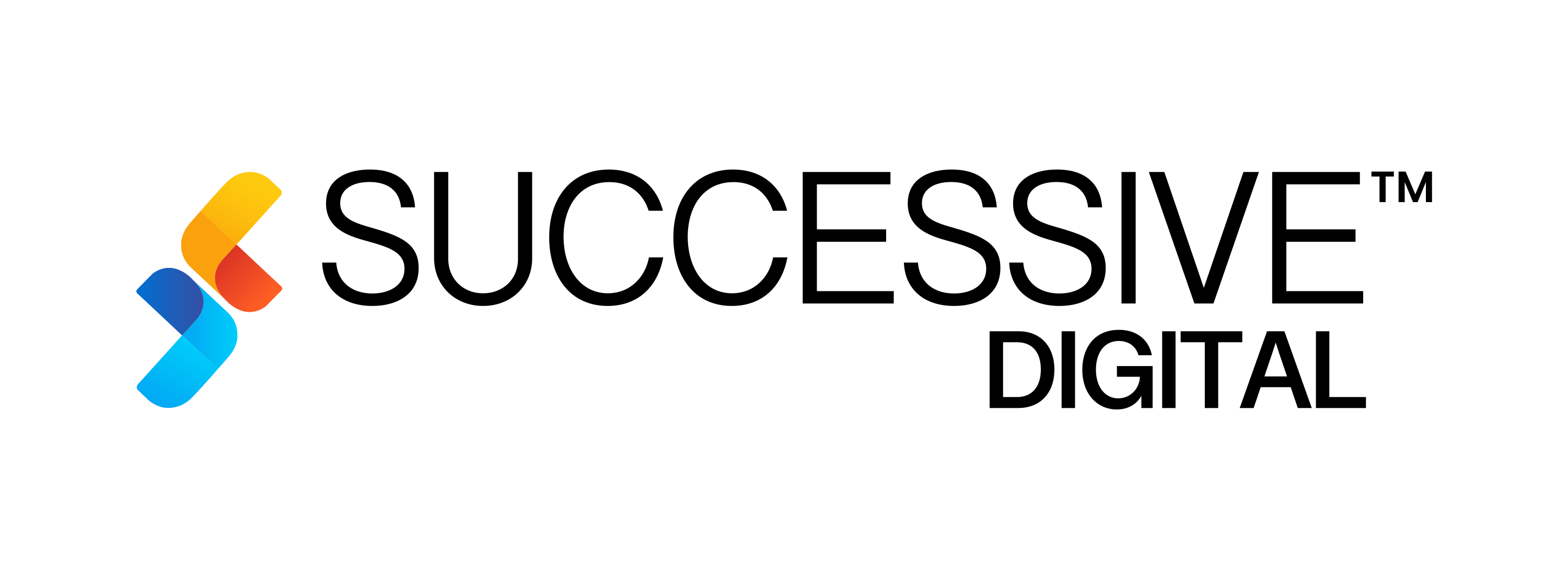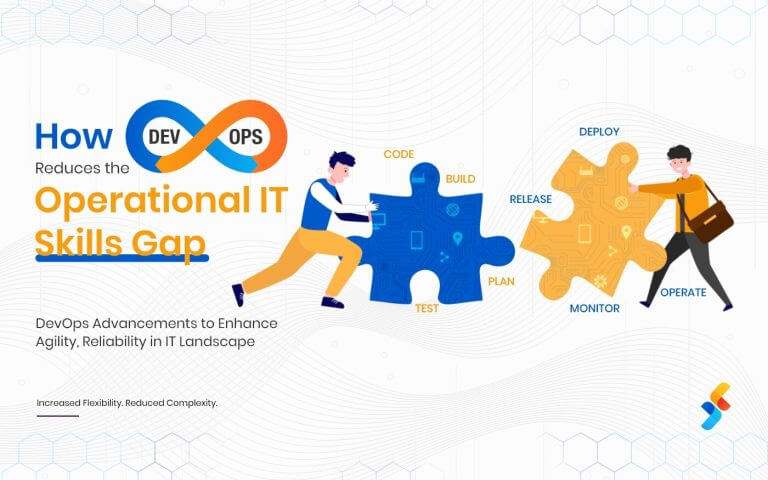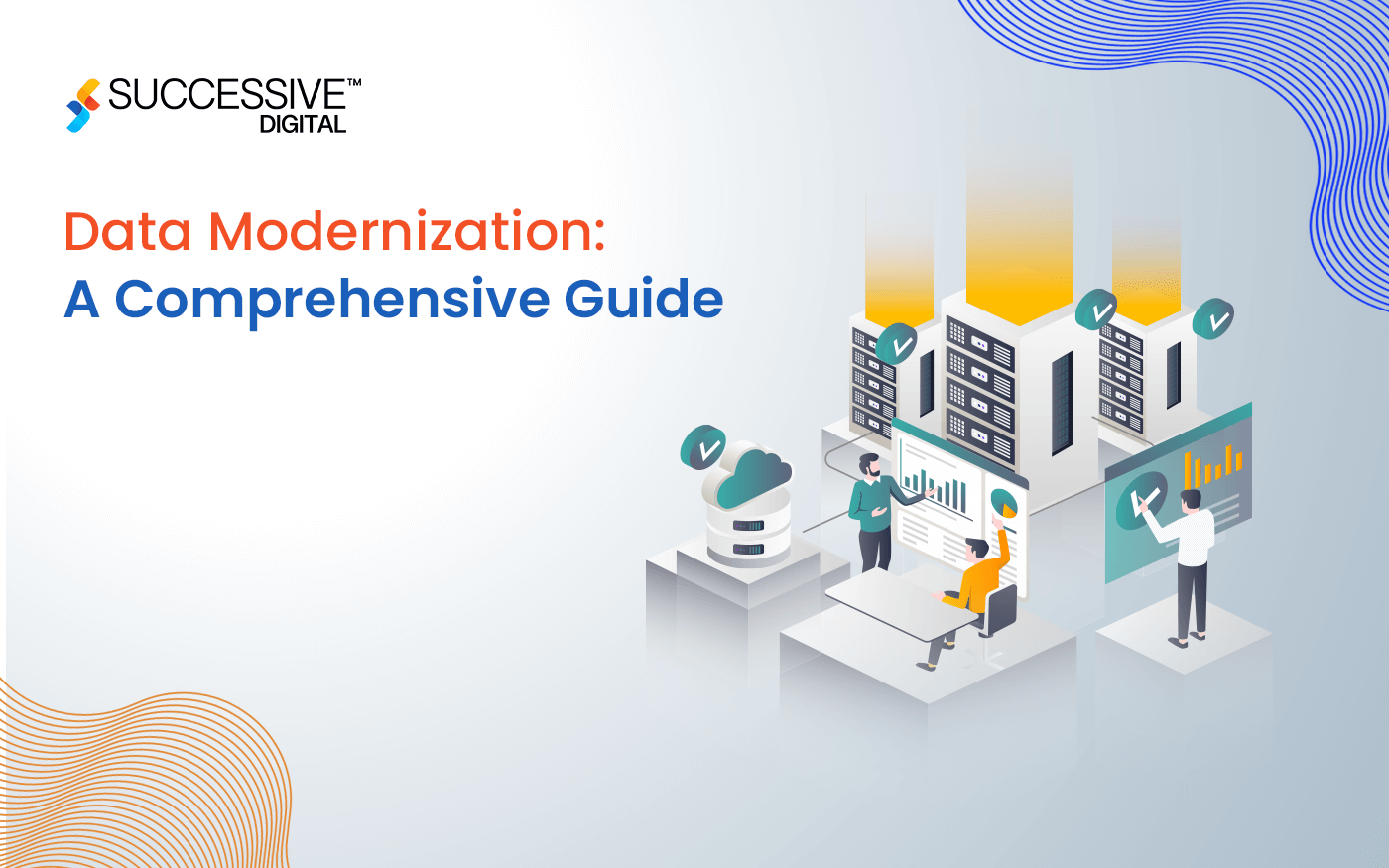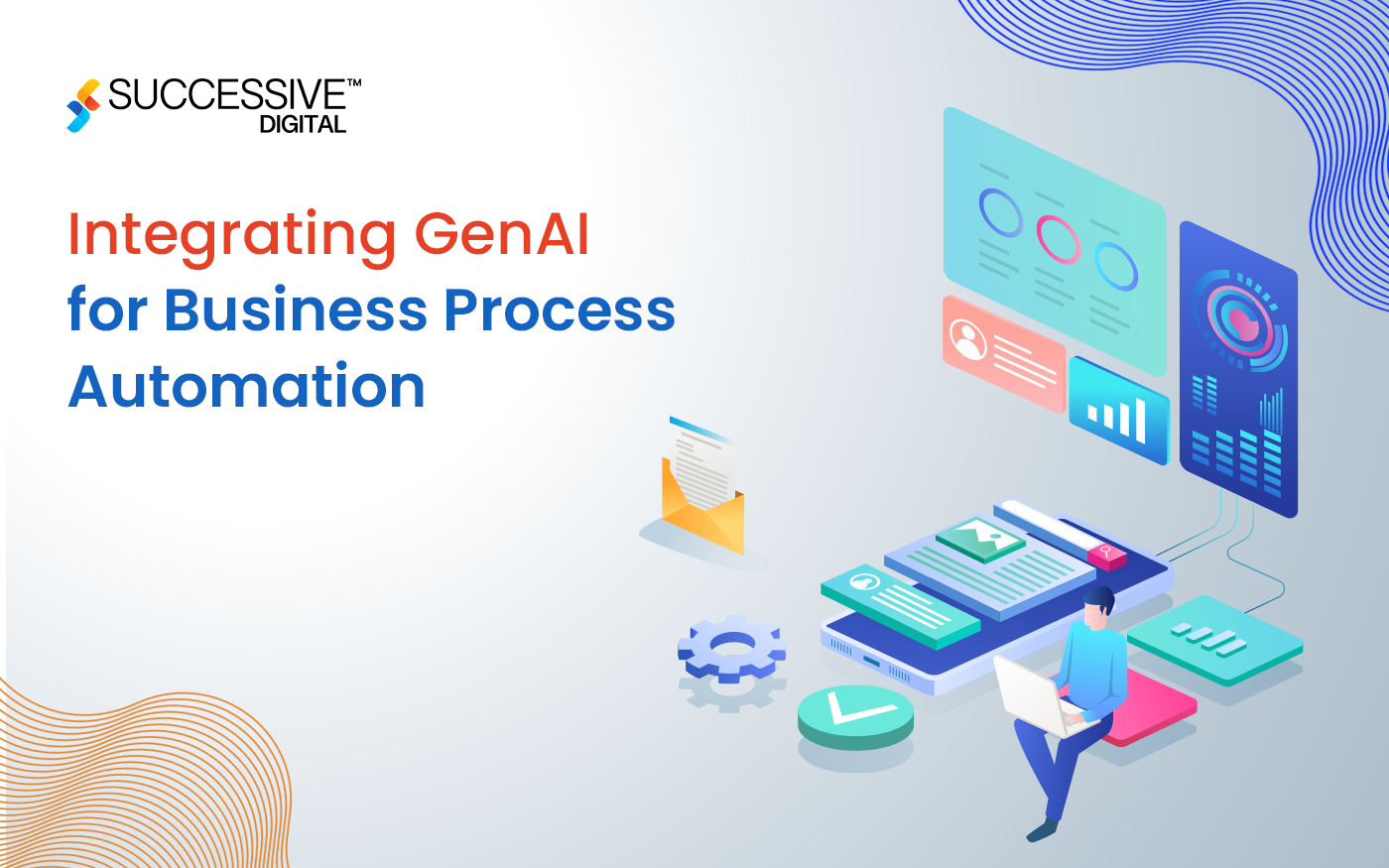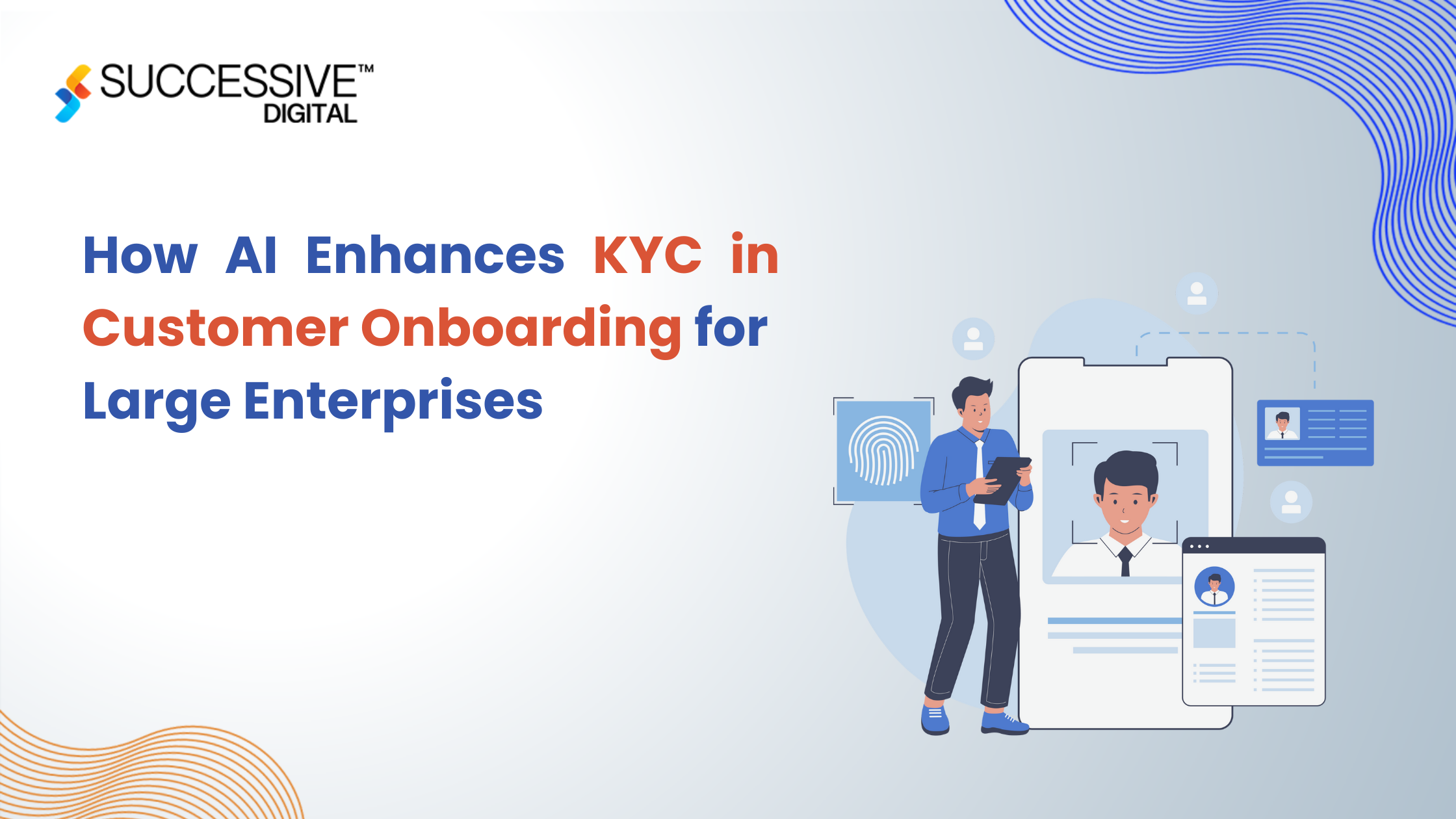Imagine if your marketing team had assistants who could handle cold calls immediately, plan meetings efficiently, and provide real-time support for inside sales. AI agents in marketing are making it a reality. These intelligent assistants use your trusted customer data to get meaningful insights and automate routine processes, allowing your team to focus on higher-impact initiatives. AI agents transform how inside sales and marketing teams coordinate and communicate with prospects, complete transactions, and drive growth by replacing time-consuming manual processes with fast, data-driven results. Let’s look at how these AI Agents in marketing turn cold calling, meeting scheduling, and inside sales into intelligent, efficient processes.
Understanding AI Agents in Marketing
AI agents are software programs designed to perform tasks autonomously or semi-autonomously using AI technologies such as machine learning, natural language processing (NLP), and data analytics. They can perform individually and inhibit autonomous decision-making and learning processes by solving problems, analyzing data, and automating repetitive tasks.
Types of AI Agents Commonly Used in Marketing
-
Model-Based Reflex Agents
Model-based reflex agents make decisions using an internal environment model. Unlike essential reflex agents, which respond purely to present perceptions, these agents use their internal model to follow the world’s condition and forecast future outcomes. For example, in marketing, a model-based agent can predict a customer’s future purchasing behavior based on previous contacts and current circumstances. If they retain an environmental model, these agents can undertake more complex tasks and adapt to changes more effectively.
-
Goal-Based Agents
Goal-based agents work with a specific target or goal in mind. They assess acts based on their contribution to accomplishing the goal. In customer relationship management, for example, a goal-based agent may choose the best actions to convert potential leads into customers, such as tailored email follow-ups or targeted adverts. These agents demand greater decision-making since they must consider possible outcomes and plan accordingly to achieve their goals.
-
Learning Agents
Learning agents are constantly improving their performance by learning from their experiences. They have four major components: a learning element, a performance element, a critic, and a problem generator. For example, a learning agent in eCommerce could improve its product recommendations based on client feedback and purchasing trends. This adaptability enables businesses to remain relevant and enhance user happiness by adapting to changing client demands.
-
Utility-Based Agents
Utility-based agents seek to maximize a utility function, quantifying the agent’s preferences for various outcomes. These agents go beyond achieving goals; they seek the best way to reach them by considering trade-offs and optimizing decisions. For example, in marketing, a utility-based agent can favor ad locations with the highest ROI while remaining within budget. This focus on optimization enables businesses to strike a balance between cost-effectiveness and desired objectives.
-
Hierarchical Agents
Hierarchical agents arrange duties and decision-making processes in a hierarchy. This architecture enables effective problem-solving by dividing complex activities into smaller, more manageable subtasks. For example, a hierarchical agent might independently plan inventory levels, logistics, and delivery routes in supply chain management, maximizing each layer for total efficiency. This strategy improves scalability and allows agents to handle complex tasks effortlessly.
-
Multi-Agent System (MAS)
A multi-agent system (MAS) involves numerous agents collaborating or competing to achieve individual or shared goals. These systems are widely utilized in distributed contexts when a single agent cannot handle complex tasks. In marketing, an MAS may include agents who work together to collect data, segment customers, execute campaigns, and analyze performance. This coordination enables organizations to manage large-scale processes more efficiently and precisely.
AI Agents for Cold Calling
Cold calling remains an essential sales and marketing approach, but nobody can deny that cold calling is daunting. High rejection rates, time-consuming processes, and the requirement for humans in the loop despite multiple AI-powered tools make it a difficult assignment for sales teams. AI driven marketing automation outbound calls, improve call efficacy, and reduce expenses. Let’s understand in detail how AI agents improve the cold-calling process.
-
Automating Outbound Calls
AI agents in marketing can initiate and carry out cold calls independently, reducing the need for manual dialing and repeating scripts. These agents, which use NLP and machine learning, replicate human-like discussions, making prospects feel involved and understood.
For example, in cold-calling campaigns, AI Agents can promote items or services, qualify leads, and even schedule follow-up calls without human participation. Businesses can utilize AI agents in marketing to contact hundreds of small businesses and provide individualized pitches based on industry data. These systems can handle thousands of calls simultaneously, significantly increasing outreach efforts.
-
Enhancing Call Effectiveness
AI agents can personalize scripts. By studying client data and behavior, they create responses and pitches that appeal to the individual on the other end. For example, an AI agent could emphasize product benefits relevant to the recipient’s industry or previous interactions.
Furthermore, AI agents provide real-time data and feedback during calls. Sentiment analysis technologies can detect a prospect’s tone and tailor the conversation accordingly. For example, if a prospect is reluctant, the AI can adjust to answer concerns or provide incentives. This level of adaptability increases the chances of converting leads and boosts total call efficacy.
-
Reducing Costs and Increasing Efficiency
AI agents in marketing can optimize expenses and improve efficiency in cold calling by providing a scalable, automated alternative to traditional approaches. Unlike human-driven outreach, AI agents can handle multiple calls simultaneously, eliminating labor-intensive processes and cutting overhead expenses. They readily interface with CRM and telephone systems, resulting in faster processes, automated lead qualifying, and real-time data updates. This enables sales teams to focus on high-priority leads, increasing conversion rates and resource utilization. These AI Agents reduce acquisition costs while increasing ROI through improved call personalization, real-time sentiment analysis, and consistent performance. Businesses gain more productivity at a lower price than traditional ways by reducing human errors and expediting outreach efforts.
-
Technical Architecture of AI Agents for Cold Calling
AI agents’ success in cold calling stems from their intelligent technical design. This architecture combines AI components and advanced algorithms to provide smooth, human-like interactions. Here’s a detailed analysis of the key elements that comprise the technical architecture of AI-powered cold-calling agents.
-
-
Profiling for Actionable Customer Insights
-
The first layer of the technical architecture of AI agents for cold calling has a profiling module or perception layer. It serves as a sensory system for gathering and analyzing data about potential prospects. AI agents can approach each call with personalized insights by analyzing customer profiles, preferences, and behavior. It filters irrelevant information and showcases key attributes like buying intent, way of communication, and demographics. For example, by utilizing CRM data and social media analysis, this module enables AI agents to adapt their tone and improve the conversational flow based on customer preferences and personality traits.
-
-
Memory Module: Centralized Knowledge Repository
-
This module is the knowledge base of AI agents for cold calling. It stores client data, past interactions, and frequently asked queries. It works like a short- and long-term memory hybrid, ensuring AI agents remember past calls and improve follow-up continuity. Let’s understand this module with an example: This module enables AI agents to provide customized responses without repetitively asking the same questions by retrieving a customer’s previous communication history.
-
-
Planning Module or the Decision Making Layer
-
This layer or module is the core of AI for cold-calling. This module synthesizes data from the above two modules to create a call strategy. It uses rule-based algorithms and decision trees to plan the flow of conversation, identify upsell opportunities, and find the best slots to set up calls. This module can make the most engagement scores by prioritizing calls to leads during specific time slots to maximize conversion rates.
-
-
Action Module, Executing Everything Together
-
The strategies curated by the planning module are finally translated into actionable communication by this module. It establishes communication with customers through NLP to deliver customized pitches, respond to queries, and ensure seamless call execution with automated dialing systems. AI for cold calling can generate scripts, improve its tone in real-time, and respond to clients based on sentiments detected during the conversation.
-
-
Learning Strategies for Continuous Improvement
-
AI for cold calling depends on advanced learning mechanisms to enhance its performance over time. It fine-tunes conversation strategies based on labeled outcomes, such as successful or unsuccessful calls. It refines call flows and customer engagement techniques and identifies hidden patterns in customer data to uncover new opportunities. AI for cold calling learns from failed pitches or calls and improves its strategy to align better with customer objections in future interactions.
AI Agents for Meetings Scheduling
Setting up meetings might feel like juggling calendars, chasing confirmations, and handling follow-ups—all time-consuming tasks. Introducing AI meeting agents, the game changers for organizations trying to streamline meetings. These intelligent agents do more than just schedule meetings; they also transcribe, summarize discussions, and manage tasks, resulting in more productive meetings from start to finish. Whether you’re coordinating across time zones, tracking action items, or ensuring that nothing falls through the cracks, AI meeting agents deliver efficiency, clarity, and ease to every stage of the process.
-
Streamlining the Scheduling Process
AI meeting agents simplify scheduling by automating simple tasks and integrating with applications such as Google Calendar, Outlook, and workplace email systems. Tools like x.ai scan participants’ calendars to determine the best meeting times, reducing the need for back-and-forth coordination across time zones. Real-time time slot suggestions and schedule changes make working with internal teams and external stakeholders easier.
-
Improving Meeting Coordination
AI Agents can coordinate meetings without keeping humans in the loop. Machine learning matches availability, improves scheduling, and provides automated reminders to keep operations on track. AI-powered softwares such as Fellow and Fireflies.ai go above and beyond by handling follow-ups, creating task lists from discussions, and ensuring that no action items are overlooked. This streamlines operations and ensures responsibility after meetings.
-
Enhancing User Experience
AI meeting agents improve the experience for all parties. Sales teams experience faster meeting confirmations, while prospects benefit from smooth scheduling and clear follow-ups. With improved experience and accurate results, such as increased meeting conversion rates and reduced scheduling timeframes. Transcription and task automation help businesses save time, improve accuracy, and streamline decision-making processes.
-
Technical Architecture
Here’s the breakdown of technical architecture of AI agents in cold calling:
1. Intelligent Contextual Analysis ( Profiling)
The profiling module acts as the sensory system for AI meeting scheduling agents, collecting and evaluating data such as participants’ availability, preferences, and meeting priorities. It integrates calendars, email communications, and organizational structures to ensure contextual relevance. This module eliminates irrelevant information and concentrates on critical components such as time zones, work hours, and preferences for virtual or in-person meetings. AI meeting scheduling agents examine team calendars and recommend the best time slots, considering competing commitments and time zone variances.
2. Centralized Data Repository ( Memory)
The memory module saves and organizes data about previous and upcoming meetings, participant preferences, and organizational norms. AI meeting scheduling agents can remember recurrent schedules, desired lengths, and possible challenges. It combines short- and long-term memory, ensuring continuity and consistency throughout scheduling activities. For example, an AI meeting scheduling agent remembers a participant’s preference for early meetings and avoids arranging the most missed slots.
3. Strategic Meeting Optimization ( Planning)
This module is the decision-making engine. It identifies the best approach to scheduling meetings. It analyzes data from the profiling and memory modules to determine ideal schedules, resolve conflicts, and guarantee compliance with business policies. The module combines optimization algorithms and rule-based logic to balance efficiency and participant convenience. For example, AI meeting scheduling agents examine availability, prioritize high-priority meetings, and automatically suggest rescheduling options for overlapping events.
4. Real-Time Execution ( Action)
This module turns the planning module’s decisions into actionable actions, such as sending meeting invitations, booking hotels, and updating calendars. It interfaces with email platforms, calendar systems, and video conferencing applications for smooth execution. Feedback from the action module is used to improve future scheduling processes. This module allows AI meeting scheduling agents to produce and distribute calendar invites to all participants, complete with video call URLs and agenda details.
5. Continuous Process Enhancement ( Learning)
AI meeting scheduling agents leverage learning strategies to refine and improve their scheduling capabilities with each interaction. They learn from the labeled data, such as successful and unsuccessful scheduling attempts, and adapt scheduling strategies based on feedback, such as participant preferences for specific times. With continuous learning, AI agents for cold calling identify meeting patterns, predict preferences, and optimize scheduling.
AI Agents for Inside Sales
Identifying which leads are worth following and create unique pitches connecting with prospects. Well, all of this can be done by an AI agent. These autonomous solutions allow your sales force to focus on what they do best: establishing relationships and completing deals. Let’s understand how AI agents are changing the inside sales landscape.
-
Lead Qualification and Scoring
One of the most challenging tasks in inside sales is sorting through vast amounts of leads to find the most likely to convert. AI agents can help the sales team find possible prospects by analyzing massive data containing demographic information, interaction history, and emporographic details. Machine learning algorithms can select prospects based on predetermined criteria, such as likelihood to engage or willingness to buy, saving sales reps hours of human examination.
Integration with predictive analytics significantly improves lead-scoring models. AI agents continuously improve their scoring algorithms by analyzing previous trends and real-time data, increasing accuracy over time. This dynamic scoring ensures that sales teams focus on high-value prospects, increasing overall conversion rates.
-
Personalized Sales Outreach
Customers today expect individualized collaboration, and AI agents help sales teams deliver on that expectation. AI agents create targeted communications and follow-up techniques based on customer data, such as surfing history, purchasing patterns, and social media activity. This level of customization strengthens connections and increases the possibility of participation.
These smart AI Agents have an autonomous capability of understanding client preferences and behaviors, ensuring that outreach activities are relevant to specific prospects, making conversations more engaging, and boosting the likelihood of closing business.
-
Managing Sales Pipelines
Managing sales pipelines manually is time-consuming and prone to human error. AI agents automate this process by constantly tracking and updating prospects’ status as they move through the sales funnel. This gives sales managers real-time visibility into pipeline health, allowing them to spot bottlenecks and allocate resources more efficiently. AI models use historical trends, lead quality, and market conditions to deliver accurate predictions, allowing sales teams to make more educated decisions and optimize their strategies.
-
Technical Architecture
AI agents for inside sales streamline lead generation, nurture prospects, and optimize the sales process. Let’s understand the technical architecture demonstrating how inside sales AI solutions work :
1. Understanding Prospects and Context ( Profiling)
The profiling module functions as a perception engine for inside sales AI solutions. It collects and analyzes client demographics, browsing habits, and purchasing patterns. This module analyzes unstructured data from CRM systems, email threads, and social media, extracting essential insights to help direct interactions. For example, inside sales AI solutions assess a prospect’s past queries and engagement history to create a tailored pitch that ensures relevance in the conversation.
2. Storing and Leveraging Sales Data ( Memory)
The memory module serves as a knowledge base for AI in sales optimization. It organizes and stores data such as customer profiles, interaction histories, and sales performance indicators. This module allows the agent to recollect previous call insights and maintain communication continuity, which promotes trust and relationship building. Inside sales, AI systems can recall previous customer objections and recommend counter-strategies based on successful resolutions recorded in their memory module.
3. Strategizing Sales Interactions ( Planning)
The planning module is the decision-making hub that directs the agent’s sales strategy. It leverages data from the profile and memory modules to prioritize leads, arrange outreach time, and recommend the best ways. This module ensures that AI in sales optimization makes good decisions using algorithms such as predictive analytics and lead scoring. This module enables inside sales AI solutions to focus on follow-ups with high-scoring leads, maximizing time spent on prospects with the highest conversion potential.
4. Executing Sales Activities ( Action)
The action module converts strategies into actionable execution. It automates outreach by sending personalized emails and call scripts and facilitating chat sessions, serving as the intermediary between the agent and the customer. Feedback loops from the action module help refine strategies in real-time. For example, inside sales AI solutions can send customized follow-up emails depending on a prospect’s response to an initial conversation, dynamically modifying the sales script for the following engagement.
5. Continuous Improvement in Sales ( Learning )
AI-driven inside sales solutions integrate advanced learning mechanisms to enhance their capabilities over time. Inside sales, AI marketing technology improves based on labeled data, such as successful sales conversations, and improve performance based on outcomes like conversion rates or customer satisfaction. With this method, these AI agents identify new patterns in customer data, enabling the discovery of untapped opportunities.
Technical Architecture of AI Marketing Agents
AI Agents are built on a robust framework that combines data collection, machine learning models, user interfaces, integration frameworks, and stringent security measures. We already have compiled the technical modules of specific AI agents; let’s further understand the comprehensive architecture of AI marketing agents.
-
Core Components of AI Marketing Agents
| Data Collection and Integration | AI marketing agents rely on integrated data from various sources, including social media platforms, CRM systems, eCommerce platforms, and web analytics tools. APIs, data lakes, and real-time data streaming are critical technologies that enable structured and unstructured data consumption. This capacity ensures that the agents have a steady flow of information to develop actionable insights. For example, real-time data from social media sites allows agents to adjust marketing plans based on relevant themes or customer preferences. |
| Data Processing and Storage | Once collected, data is processed and stored in preparation for analysis. Extract, Transform, and Load (ETL) is a data processing technique that cleans, structures, and converts raw data into usable formats. Scalability, dependability, and cost-effectiveness are common reasons cloud storage solutions like AWS S3 and Google Cloud Storage are so popular. These technologies enable marketing agents to access and evaluate large amounts of data without experiencing lag. |
| AI and Machine Learning Models | Machine learning models are the foundation of AI marketing agents, enabling predictive analytics, customization, and decision-making. Models are trained on previous data to find patterns and predict outcomes like consumer behavior or campaign performance. These models are then deployed and scaled via cloud-based systems such as AWS SageMaker or Azure ML, which ensure high availability and computational efficiency. This allows for real-time customization of marketing campaigns and dynamic changes based on performance metrics. |
| User Interfaces | User interfaces allow marketers to communicate with AI bots. Dashboards represent key metrics, campaign performance, forecast insights, and conversational interfaces like chatbots that provide direct communication. These interfaces ensure that even non-technical people can fully utilize the capabilities of AI marketing agents, making them more accessible and practical. |
-
Integration Frameworks
Middleware functions as a communication bridge, allowing AI agents to share data with various systems, including marketing automation tools, email marketing platforms, and analytics software. It improves the operation of AI marketing agents by ensuring that data flows smoothly.
APIs enhance this integration by standardizing techniques for connecting to external tools and services. For example, linking an AI marketing agent with a CRM system via API enables real-time synchronization of client profiles. This provides individualized outreach and engagement, with marketing efforts tailored to individual interests. This level of interoperability reduces workflow disruptions and considerably increases the overall efficiency of marketing activities.
-
Security and Compliance
Data security and compliance are non-negotiable for any business operations, especially considering the sensitivity of client data. Encryptions are necessary as they ensure that data is secure during transmission and storage. Access controls limit data access to authorized individuals, preventing unauthorized usage or breaches. Additionally, AI marketing agents must comply regulatory standards such as GDPR and CCPA. Secure data transmission practices like SSL/TLS help protect sensitive information from cyber threats.
Cost Considerations for Implementing AI Agents in Marketing
Implementing AI agents in marketing necessitates a well-planned strategy and awareness of the associated costs. Each stage—the original investment, implementation, ongoing operations, and cost-benefit analysis—requires attention to detail and strategic decision-making. Partnering with an AI strategy consulting company is critical at every stage to ensure optimal resource usage and alignment with corporate goals. Let’s understand cost considerations for implementing AI agents in marketing:
A. Initial Investment
| Cost of AI Software and Platforms | The first step in implementing AI agents is understanding the cost associated with AI software and platforms through license and subscription fees. These solutions, such as AI-powered sales tools and machine learning frameworks, lay the groundwork for adopting data-driven marketing tactics. An AI strategy consulting company assists enterprises in selecting the most appropriate AI platforms based on business requirements, avoiding over-investment in not-required features, and ensuring scalability. |
| Hardware and Infrastructure Requirements | A strong infrastructure is required to support AI-powered systems, whether on-premises servers or cloud-based solutions. Cloud services like AWS or Azure provide scalable possibilities, but on-site infrastructure may require a considerable initial expenditure. Consultants compare the cost-effectiveness of cloud versus on-premises solutions and create an infrastructure suited for operating AI-powered sales tools, ensuring smooth installation. |
B. Implementation Costs
| Integration with Existing Systems and Customization
|
AI agents must interact with CRMs, marketing automation platforms, and analytics systems. This frequently requires customization to comply with specific workflows and data-driven marketing plans. AI strategy consulting services optimize integration processes using middleware and APIs to avoid delays and assure interoperability with current marketing platforms. |
| Hiring or Training Staff | Introducing AI agents demands trained staff to manage and get along with such modern capabilities. Companies may need to hire data scientists or train existing employees to adapt to new workflows that use AI-powered sales tools. An AI strategy consulting company can cut expenses by detecting skill gaps, advising relevant training programs, and even providing managed AI services to supplement recruitment efforts. |
C. Ongoing Operational Costs
| Maintenance and Updates of AI Systems | Just like LLMs, for efficient output AI agents must be updated and maintained on a regular basis. These expenses include software patches, infrastructure changes, and model recalibration. By providing monitoring and maintenance services, businesses ensure that AI-powered marketing tools work well, reducing downtime and limiting cost overruns. |
| Continuous Training and Improvement of Machine Learning Models | AI agents require continual training to react to changing market dynamics and customer behavior, assuring the accuracy of data-driven marketing plans. Businesses must ensure that machine learning models are retrained using relevant data, allowing AI agents to remain successful and in line with company objectives. |
D. Cost-Benefit Analysis
| Estimating ROI | AI-powered sales solutions provide a return on investment through higher productivity, improved campaign performance, and less manual work. Data-driven marketing techniques powered by AI agents lead to greater lead conversion rates and customer retention. AI strategy consultants provide precise ROI predictions to help firms understand the financial impact of AI investments and ensure that costs are in line with revenue targets. |
| Long-Term Financial Benefits vs. Short-Term Investments | While the upfront expenses of adopting AI agents may appear high, the long-term benefits from automation, precise targeting, and scalable marketing campaigns outweigh the early investments. By providing strategic insights, these experts help businesses match AI-powered sales tools with corporate growth objectives, assuring long-term financial rewards. |
Benefits of Using AI Agents in Marketing
Let’s face it: marketing may be a frenzy of activities. Something always requires your attention, whether creating advertising or evaluating data. That’s where AI agents come in, working as your dependable assistant who never misses a beat. They’re here to take the monotonous tasks off your plate and help you scale smarter, not harder. Curious about how they do it? Let us break it down.
-
Increased Productivity
Consider all the hours spent scheduling social media posts, sorting leads, and evaluating campaign stats. Consider an AI agent performing it for you faster and without error. That is the power of AI. By automating these time-consuming chores, AI allows your team to focus on essential things, such as developing the next viral campaign or nurturing high-value leads.
For example, in campaigns, AI systems can generate personalized emails in seconds instead of manually tailoring communications to hundreds of recipients.
What about social media scheduling? It’s done.
The result? A more productive team that can concentrate on strategy rather than getting bogged down in the details.
-
Improved Accuracy & Consistent Performance
We’ve all witnessed what happens when marketing hiccups—such as a misspelling in a campaign or a misaligned brand voice—slip through the cracks. It’s embarrassing, right? AI agents combine the functions of a proofreader, brand manager, and data analyst.
AI guarantees that all consumer interactions are consistent and polished. Whether responding to FAQs with chatbots or providing reports, these technologies adhere to the standards you specify, leaving no space for error. Your messaging stays consistent, your figures rise, and your campaigns give favorable outcomes.
-
Enables Data-Driven Decision Making
Let’s discuss the core of AI-enabled marketing: data. AI does more than collect data; it makes sense of it. AI agents provide rapid feedback on what’s working and what’s not.
For example, rather than guessing which campaign will be successful, AI evaluates consumer behavior, engagement trends, and rival plans to direct your next move. Want to know which ad creative will generate clicks? Or which audience subset is more likely to convert? AI provides those responses, allowing you to adjust your strategy and make better selections.
-
Scalability
Scaling your marketing activities can feel like a juggling act. However, with AI agents, expanding does not mean exhausting your workforce or depleting your resources.
AI tools do the heavy lifting, whether interacting with thousands of prospects via chatbots or conducting programmatic ad campaigns on various platforms. Need to manage tailored outreach to a growing audience? AI has it covered. Automating workflows may increase your productivity without breaking a sweat—or recruiting a small army.
Challenges and Considerations
Implementing AI agents in marketing presents unique problems, particularly for jobs such as cold calling, meeting scheduling, and inside sales. Businesses must successfully negotiate these challenges to realize the potential of AI while mitigating hazards. Here are the essential areas to consider:
A. Integration with Existing Systems
Integrating AI agents with existing CRM systems and marketing tools is a big hurdle. Seamless integration guarantees that AI agents sprint, exploiting these platforms’ historical data and insights. Without adequate integration, enterprises risk creating operational silos that can harm the productivity of both human teams and AI systems. This procedure frequently entails customizing APIs, ensuring data compatibility, and maintaining real-time synchronization between AI agents and existing software platforms.
B. Data Privacy and Compliance
As AI agents collect and analyze massive amounts of user data. It is essential for businesses to adhere to severe rules such as the General Data Protection Regulation (GDPR) and the California Consumer Privacy Act (CCPA). Compliance with these frameworks is necessary to avoid severe penalties and reputational harm. Furthermore, secure handling of sensitive data is critical, necessitating strong encryption mechanisms, access controls, and regular audits to discover weaknesses. Organizations must also implement transparent data practices, alerting customers about how their data is utilized and giving them control over it.
C. Maintaining the Human Touch
While AI agents excel at efficiency and scalability, over-automation may alienate customers. Marketing is fundamentally relationship-driven, and clients frequently value genuine, human relationships. Finding the correct mix between automation and human touch is critical. Businesses can use AI systems to route complicated queries to human agents or incorporate personalized features into AI-generated communications. For example, including consumer preferences or contextual information in outreach can make encounters more human and approachable.
D. Technical Expertise
Implementing and operating AI systems demands a high level of technical knowledge. Skilled professionals are required to configure AI algorithms and optimize their performance, ensuring that these systems give outcomes that align with company objectives. However, a talent gap frequently exists, necessitating firms to train and upskill their personnel. This could include workshops, certifications, or collaborations with AI solution vendors. A well-trained workforce can better debug problems, refine AI models, and connect technology with changing marketing tactics.
Future Trends in AI-Driven Marketing Agents
AI agents are evolving incredibly, and their marketing potential is rapidly expanding. These developments redefine how organizations interact with their customers, from enhanced personalization to integrations with cutting-edge technologies. Let’s look at what the future holds for AI-powered marketing agents.
A. Advanced Personalization Techniques
Consider marketing so personalized that it appears that your company knows each customer personally. That is precisely where AI is heading. Future AI agents will use customer behavior, previous purchases, and real-time interactions to create hyper-personalized advertising. For example, during a cold call, an AI bot could suggest a product package that matches the customer’s tastes.
- Example: Think about how Netflix recommends shows based on your viewing history. Imagine your sales team deploying AI agents to provide the same level of customization to potential leads—it’s a game changer!
B. Enhanced AI Capabilities
We are also seeing significant advances in AI’s ability to understand and respond like humans. Natural language understanding (NLU) is improving so AI bots can recognize emotions, modify their tone, and hold natural and compassionate conversations.
- Example: Tools like Google Duplex have demonstrated what’s possible. Can an AI agent schedule phone conversations, adapt to varied dialects, and respond with warmth and empathy? That’s no longer the future; it’s the now.
C. Integration with Advanced Technologies
What happens when AI is combined with technologies such as augmented reality (AR), virtual reality (VR), and the Internet of Things (IoT)? You receive marketing experiences that are engaging, interactive, and memorable.
- Example: Consider this scenario: an AI agent assists a prospective homebuyer in scheduling a virtual reality tour of their ideal home. The AI gives real-time information about the home’s characteristics, location, and financing choices during the tour. Consider IoT-enabled AI bots that remind customers to reorder goods based on their smart fridge’s inventory. These integrations provide an entirely new level of ease and engagement.
D. Ethical AI and Fairness
As wonderful as these developments are, we must acknowledge the responsibility that comes with them. AI agents must be fair, unbiased, and transparent. Customers expect and deserve AI systems that treat them fairly and secure their data. Businesses increasingly concentrate on ethical AI frameworks to foster trust and ensure that their systems make objective conclusions.
- Example: IBM’s AI Fairness 360 toolbox serves as a perfect example. Assisting businesses in identifying and eliminating biases in their AI systems paves the way for marketing agents who act honestly and transparently.
Best Practices for Implementing AI Agents in Marketing
Implementing AI agents in marketing requires a deliberate and methodical strategy. Businesses can realize AI’s full potential by adhering to best practices for tasks like cold calling, meeting scheduling, and inside sales. Let’s understand:
A. Defining Clear Objectives
The first step in incorporating AI agents into your marketing operations is establishing clear and quantifiable objectives. Are you looking to enhance lead generation by 20%? Increase meeting scheduling efficiency? Reduce the amount of time salespeople spend on repeated tasks. Defining these goals ensures that AI solutions are consistent with your business strategy. For example, a company focused on inside sales may emphasize AI agents that can better qualify leads, freeing up human reps to close transactions faster.
B. Selecting the Right AI Tools and Platforms
Every AI solution caters to specific requirements. These solutions must be evaluated based on their functionality, scalability, and ease of integration with existing systems, such as CRM or marketing automation software. Choose platforms that provide extensive analytics, transparent reporting and monitgoring, and user-friendly interfaces. Scalability is also important—your AI must expand alongside your business.
For example, HubSpot and Salesforce Einstein are popular options for businesses trying to improve their marketing and sales processes. These solutions provide AI-driven analytics, predictive lead scoring, and workflow automation, making them perfect for enterprises of all sizes.
C. Training and Onboarding Teams
AI agents are not replacements for your sales crew; instead, they are collaborators. To fully realize their potential, you must guarantee that your staff is prepared to work alongside them. Employees will be trained to grasp AI capabilities, analyze findings, and apply these technologies successfully in their regular processes. A collaborative approach is essential; team members must view AI as an enabler, not a competition. Timely workshops and real-time stimulated training can assist teams in understanding how to incorporate AI-driven insights into their strategies, making the transition smoother and more effective.
D. Continuous Monitoring and Optimization
AI agents are not simple “set it and forget it” solutions. Their performance should be monitored regularly to verify they are reaching your objectives. Use key performance indicators (KPIs) such as lead conversion rates, call durations, and customer satisfaction scores to evaluate their success. Gathering feedback from your sales team can also provide significant insights into areas where AI needs to be adjusted or improved.
For example, a marketing team employing AI-powered cold calling solutions can analyze call data to uncover patterns, such as times of day with the best response rates, and then modify call plans appropriately.
E. Ensuring Ethical Use
As AI agents become more complex, ensuring they operate ethically and transparently is critical. Create guidelines highlighting appropriate AI use, such as avoiding aggressive sales methods, preserving consumer privacy, and offering clear information when communicating with an AI agent. In response to growing concerns about AI ethics, many organizations are implementing transparency standards, such as telling customers when they communicate with an AI rather than a human. This increases trust and improves the customer experience.
Case Studies and Success Stories
Company A: Transforming Cold Calling with AI
A mid-sized IT services organization wanted to improve the effectiveness of its cold-calling campaigns. Their sales team struggled to discover high-quality leads and spent too much time contacting prospects with low conversion potential.
The organization partnered with an AI strategy consulting company and developed an AI-powered cold-calling solution with its existing CRM platform. These systems used predictive lead-scoring algorithms to select prospects based on previous contacts, industry data, and behavioral tendencies. Furthermore, the AI agents used voice analytics to improve discussion methods during calls.
As a result, qualified leads increased by 35%. The AI agent’s accuracy in targeting the correct prospects cut typical call handling times by half.
Company B: Streamlining Meeting Scheduling
A multinational consulting firm had significant difficulties scheduling meetings across time zones and handling the varied schedules of numerous stakeholders. The manual approach frequently resulted in delays, aggravating both clients and internal personnel.
The organization hired an AI strategy consulting company and they curate AI solution by utilizing calendly and x.ai to overcome this. These AI-powered assistants worked flawlessly with apps like Microsoft Outlook and Google Calendar. They automatically found appropriate meeting times, handled rescheduling requests, and sent out reminders to attendees.
Within a few months, scheduling efficiency increased considerably, resulting in a 70% reduction in meeting delays. Automation reduced administrative staff time and increased client satisfaction by 25%. The firm’s capacity to plan meetings immediately established a competitive advantage, especially in time-sensitive consulting projects.
Company C: Boosting Inside Sales Efficiency
A SaaS provider’s inside sales staff struggled to manage a high volume of incoming queries while retaining individualized communication. This bottleneck resulted in delayed follow-ups and missed income opportunities.
The company launched an AI-powered chatbot, similar to Drift or Intercom, that linked with their existing CRM system (HubSpot). The chatbot handled first inquiries by filtering leads using specified score criteria such as firm size, industry, and urgency. It also forwarded high-value leads directly to sales personnel and followed up with individualized, context-aware messages.
The results were transformative: the organization cut lead response times by 40% while increasing sales conversions by 25%. The chatbot’s capacity to answer basic inquiries freed up sales reps to focus on developing relationships with high-value clients, increasing overall productivity.
Conclusion
Integrating AI Agents into marketing is no longer optional—it is required. With AI agents marketing has move beyond those data driven marketing strategies. Businesses that use AI in their plans gain a substantial competitive advantage by optimizing processes, expanding initiatives, and providing individualized consumer experiences. Beyond operational efficiency, AI promotes innovation, allowing teams to concentrate on creative problem-solving and strengthening client relationships. Staying ahead in the competition allows businesses to position themselves as industry leaders.
If you’re ready to see how AI can transform your marketing efforts, now’s the time to act. Evaluate your existing processes, set goals, and begin with AI tools that meet your immediate needs. AI agents can be customized to meet your company’s needs, such as automating lead validation or improving customer interactions. If you want to integrate AI agents into your business operations contact us today.

